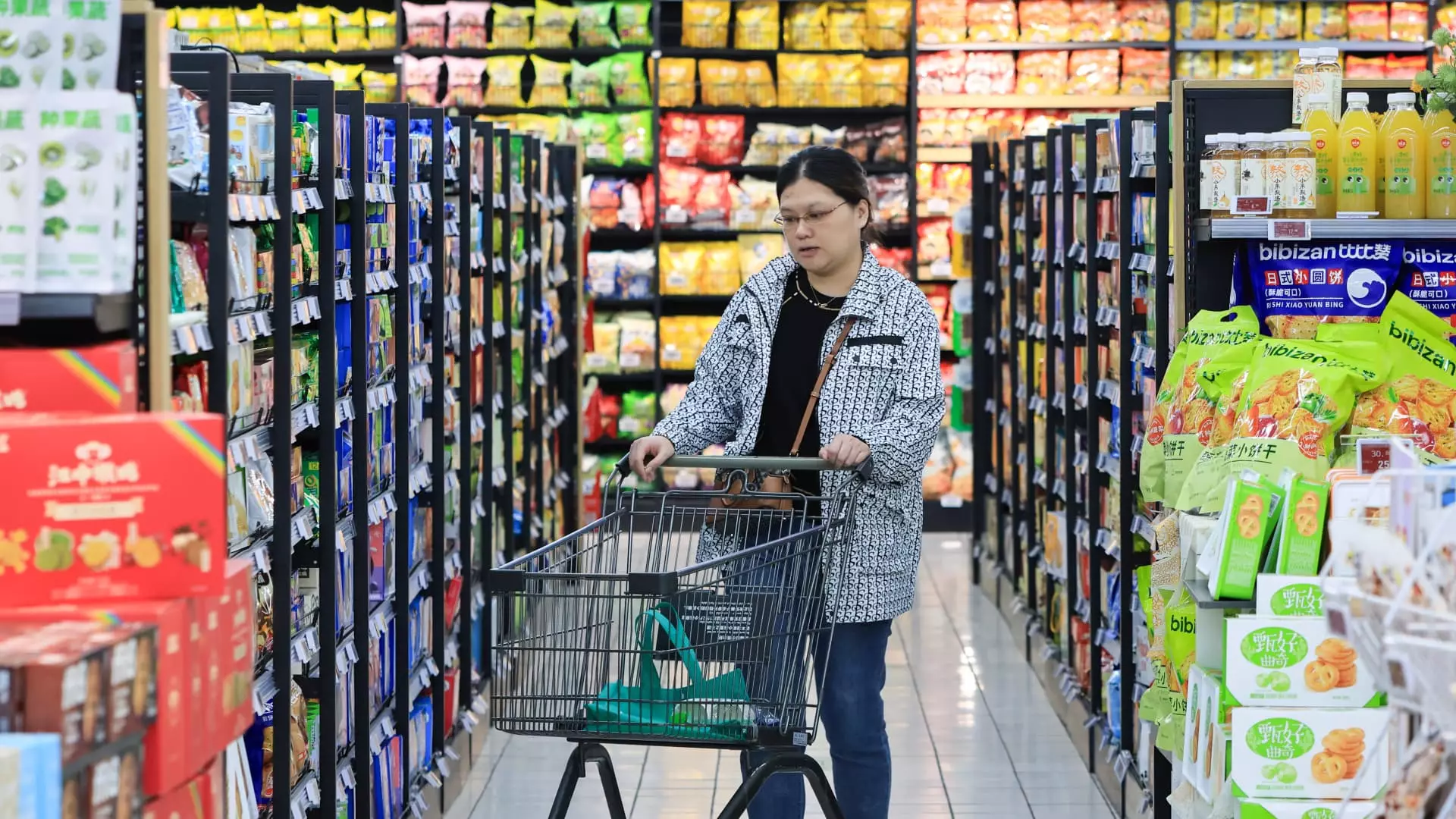In November, China’s consumer inflation hit a five-month low, with figures reported by the National Bureau of Statistics indicating a modest year-on-year increase of merely 0.2%. This figure notably fell short of analysts’ predictions, which anticipated a slight rise to 0.5% from October’s 0.3%. Core inflation, a measure that excludes the often volatile prices of food and fuel, showed a minimal increase to 0.3%, which was an uptick from the previous month’s 0.2%. These statistics hint at an ongoing struggle within China’s economy as retail demand continues to falter against the backdrop of persistent deflationary pressures in the wholesale sector.
China’s Producer Price Index, or PPI, remains a critical aspect of the economic picture, as it declined for the 26th consecutive month, reflecting a year-on-year decrease of 2.5% in November. Although this decline was less severe than the anticipated 2.8%, it underscores a troubling stagnation in industrial profit margins. Prices of industrial inputs like ferrous metals dropped significantly, signaling an oversupply situation that is disturbing the balance between supply and demand. Erica Tay, a macro research director at Maybank, articulated the concern that sizable inventories of both inputs and finished goods contribute to this persistent deflation.
The implications of deflation in the wholesale market could spill over, stymying manufacturing activity and dragging down overall economic growth. Despite measures enacted by Beijing, including cuts to interest rates and attempts to invigorate the stock and property markets, the sluggish domestic demand remains a significant hurdle.
The deflation trend raises critical questions about China’s economic trajectory. Analysts, including Becky Liu of Standard Chartered Bank, suggest that the prospects for inflation have dimmed considerably, particularly in light of recent relations with the United States. Historical patterns indicate that inflation rates tend to dip during periods of trade conflict. This sentiment is supported by observations from Goldman Sachs, which anticipates that the near-zero CPI figures will persist into next year, highlighting a stark contrast between consumer expectations and the realities of economic conditions.
Adding to the complexity, Fitch Ratings revised down its GDP growth forecast for China, projecting a growth rate of 4.3% for 2025 and an even more modest 4.0% for 2026. The credit rating agency cites the potential for a more protectionist U.S. trade policy as a significant contributing factor to this pessimistic outlook. Any shifts in trade dynamics could have profound consequences for China’s exporting capabilities and domestic industries alike.
Despite the overarching gloom characterized by deflation and temperate growth forecasts, some sectors within China’s economy have exhibited resilience. Reports indicating a positive uptick in retail sales during October demonstrate consumer behavior that muscles through the stagnant inflationary conditions. Additionally, manufacturing activity has expanded for two consecutive months as of November, suggesting a potentially positive turnaround.
As China’s leadership prepares for the Central Economic Work Conference to define goals and further stimulus measures for 2025, understanding the dual nature of China’s economic indicators will be critical. While the challenges presented by deflation and dampened consumer demand cannot be overlooked, the recovery signals in retail and manufacturing provide crucial heartbeats that may foster a renewed pathway to economic stability.
China’s current economic landscape is characterized by a complex interplay of deflationary pressures, tepid consumer spending, and emerging signs of growth recovery. While significant challenges will need addressing, particularly concerning trade relations and domestic demand, the latest economic indicators convey both urgency and opportunity. As stakeholders traverse this intricate environment, the need for strategic interventions will remain paramount, shaping the narrative of China’s economic future in the months and years to come.


Leave a Reply